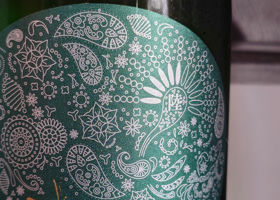


YSTJ
Produced soil 2024 Eho increase Rokunou brewery.
Happy New Year!
The toast is, of course, to my favorite San-do sake, Hozasu Roku-no-zozo, which has been stored in ice temperature for six months before being uncorked.
When we uncorked the bottle, we could hear a pleasant gas release sound, and we expected it to still be fresh.
The nose has a mellow, melon and banana-like top note, with a pleasant gassy sensation.
The strength of the wild Hozu rice is also evident in the sweetness of the rice. The layered depth of umami and overlapping, elegant acidity vividly linger on the palate.
The taste is harmonious while showing a multifaceted expression of flamboyance, roughness, and freshness, and colored the beginning of the year in the best possible way!
Japanese>English






































